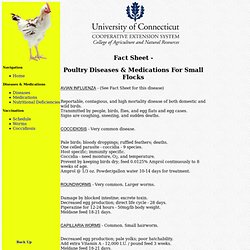

VM94/VM047: Factors Causing Poor Pigmentation of Brown-Shelled Eggs. Gary D.

Butcher and Richard D. Miles2 The first documented report of shell pigment loss in brown-shelled eggs was in 1944 when Steggerda and Hollander, while removing dirt from eggshells produced from a small flock of Rhode Island Red hens, made the surprising discovery that some of the brown pigment also rubbed off. This effect was even more evident when the eggs were rubbed vigorously. Most of the eggs gave up their pigment fairly easily except those possessing a glossy surface.
It is well established that no single factor is responsible for the loss of shell pigment in brown-shelled eggs. More often than not, the cause of shell pigment loss is not bronchitis but some stressor to which the flock has been exposed. The purpose of this article is to identify and discuss the various factors that are known to contribute to the loss of eggshell pigment. Once the egg reaches the site of the reproductive tract known as the uterus (shell gland), it resides there for approximately 20 hours. Cannibalism: Prevention and Treatment - Virginia Cooperative Extension. Authors as Published Phillip J.

Clauer, Poultry Extension Specialist, Animal and Poultry Sciences Cannibalism in fowl is a costly and vicious habit that poultry producers can not afford to ignore. It may occur at any age among all breeds, strains and sexes of fowl. Cannibalism usually occurs when the birds are stressed by a poor management practice. Since there are numerous reasons for outbreaks of cannibalism, it is important that cannibalism control be a part of your management program. Cannibalism is usually caused by one or more of these conditions: Overcrowding: chicks should be allowed: 1/4 sq. ft. Don't take chances! Reviewed by Audrey McElroy, associate professor, Animal and Poultry Sciences. Mf2336. Fact Sheet - Poultry Health & Medication. Fact Sheet - Poultry Diseases & Medications For Small Flocks AVIAN INFLUENZA - (See Fact Sheet for this disease) Reportable, contagious, and high mortality disease of both domestic and wild birds.

Transmitted by people, birds, flies, and egg flats and egg cases. Signs are coughing, sneezing, and sudden deaths. COCCIDIOSIS - Very common disease. Pale birds; bloody droppings; ruffled feathers; deaths. ROUNDWORMS - Very common. Less Common External Parasites in Poultry, VME-0019-03. 1900 Coffey Rd., Columbus, OH 43210 Carrie L.

Pickworth Avian Disease Investigation Laboratory Department of Veterinary Preventive Medicine The Ohio State University Teresa Y. Morishita Extension Poultry Veterinarian Ohio State University Extension Although lice and mites are the most common external parasites of poultry, below are other external parasites that may be occasionally seen in poultry. Chiggers Chiggers form clusters on the skin around the wings, neck, and breast of poultry and inject a substance that causes allergic skin reactions. Poultry that are infested with chiggers are droopy and emaciated. Infested birds should be treated with a kitten-strength dose of a pyrethrin-based spray and removed from the infested pastures.
Stick-tight Fleas Stick-tight fleas are the smallest type of fleas (half the size of a cat or dog flea). Infested birds will have small brown dots clinging to or embedded into the fleshy portions of the head. Fowl Ticks Scaly-Leg Mite. Avian Disease Fact Sheet - Virginia Cooperative Extension. Ps04400.